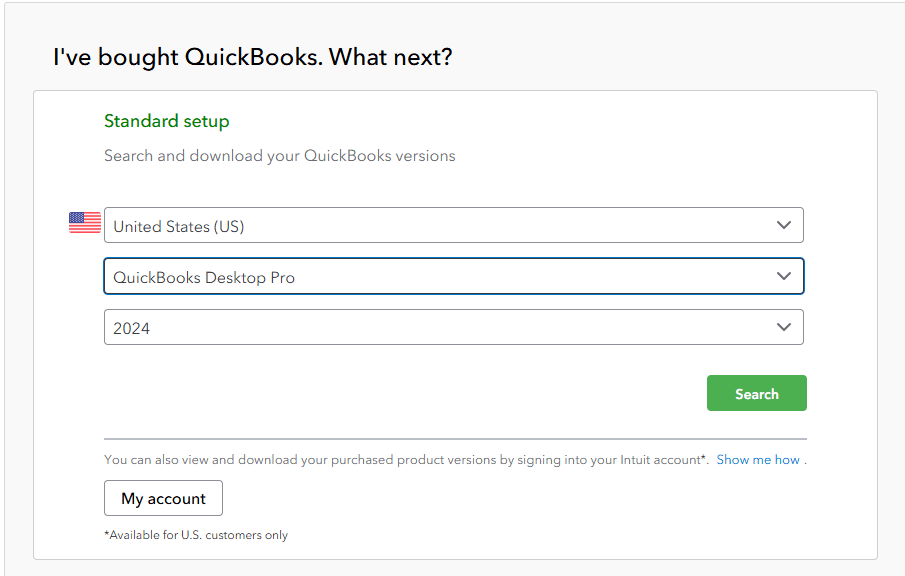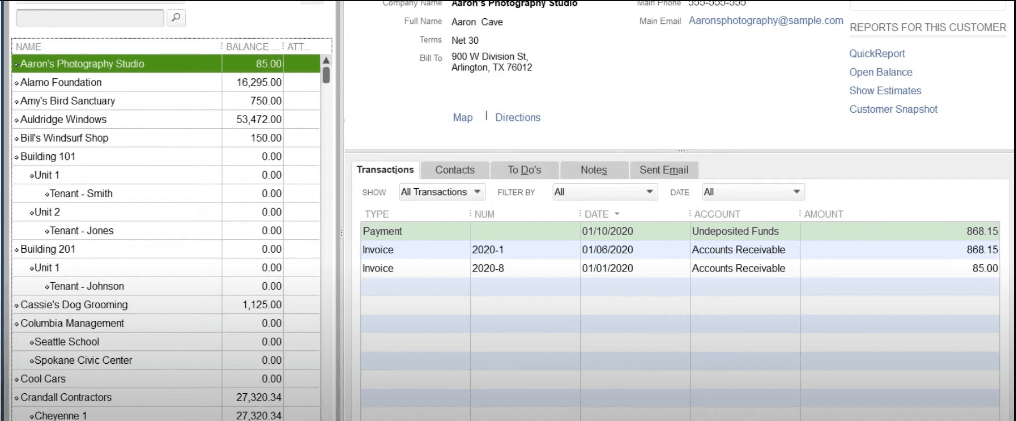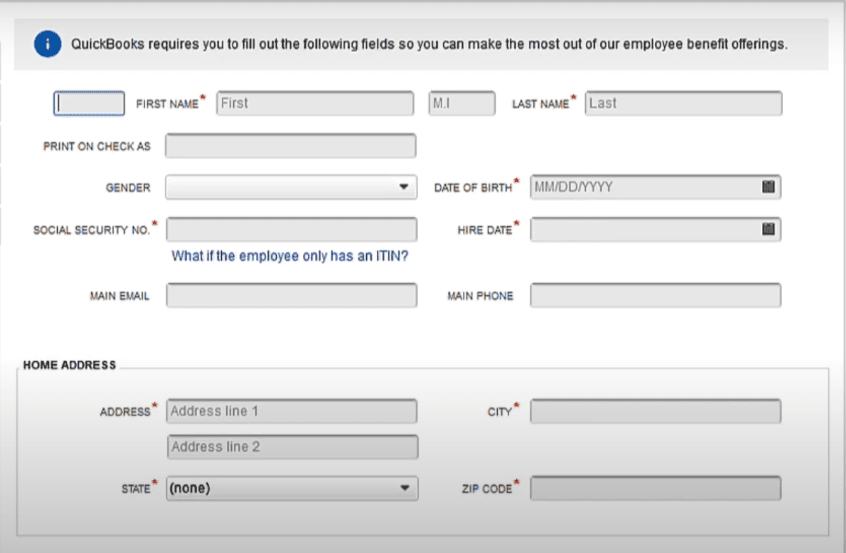How to Setup QuickBooks Desktop Detailed Guide
We understand; finding reliable guides for QuickBooks Desktop setup can be a challenge, especially when there are numerous resources available for the online version. Whether you’re switching from QuickBooks Online or just starting fresh with QuickBooks Desktop, we’re here to help you every step of the way. In this blog, we’ll walk you through the complete QuickBooks Desktop setup process, from downloading and installing the software to setting up your company profile and importing your data.
It’s not just about getting it installed; we’ll also share tips on backup measures to ensure you have a smooth accounting experience. Plus, we’ll introduce you to SaasAnt Transactions Desktop, a fantastic QuickBooks Desktop add-on that makes importing transactions a breeze. Let’s dive in to see how to get started with QuickBooks Desktop.
How to Download QuickBooks Desktop
First step in QuickBooks Desktop Setup is to install QuickBooks Desktop.
Step 1: Visit the QuickBooks download page. Select your region, product, and version, then click search and download the software.

Step 2: If the installation doesn’t start automatically, find the install file named quickbooks.exe on your desktop or in your downloads folder and double-click it to begin.
Step 3: Read the license agreement and click ‘accept and continue’ to proceed.
Step 4: Enter your license and product numbers. If you don’t have them, click ‘locate your license/product number’ to retrieve it using your business phone number or by logging into your Intuit account.
Step 5: After entering the numbers, click next. Choose the “express” option for a standalone installation or “custom” for a server setup. For more details, select ‘Explain these choices in detail.’
Step 6: Click Next to start the installation. Once QuickBooks Desktop is installed, open the program. If prompted, reboot your computer.
Step 7: Select begin activation, and you’re all set! You can now create a new company or restore an existing file.
QuickBooks Desktop Setup in 7 Steps
This guide covers how to use Quickbooks Desktop as a beginner starting from setting up the company to setting up sales tax.
1. How to Create a New Company in QuickBooks Desktop
Open QuickBooks Desktop.
Click on “My company” and select "Create a new company."
You will have two setup options:
Select Express Start for a quick setup. You only need to provide your business name, industry, and type, and you can add more details later.
Choose Detailed Start if you want to set everything up thoroughly from the start.
Follow the instructions to complete the setup. Remember, if you already have a company file in QuickBooks, make sure to give your new one a different name to avoid overwriting any existing data.
2. How to Set up Existing Company in QuickBooks Desktop
Access the File menu and select "Open or Restore Company."
Click on "Open a company file," then press Next.
Locate the folder where your company file is saved.
Select the company file (which should have a .qbw extension) from the list and click Open.
If asked, enter your username and password.
3. Setup Customers, Items and Services

Once you are done adding your company file, the next natural step in QuickBooks Desktop setup is to set up customers, items and services.
Step 1: Set Up Customers
Start by selecting "Customers" from the menu. A list of customers will appear. Clicking on a customer’s name will display their contact details and past transactions. Indented names indicate jobs assigned to the customer above.
Step 2: Create a New Customer or Job
To add a new customer or job, click on "New Customer and Job" at the top. Fill in the customer name and job information. QuickBooks will remember this information for future transactions and reports.
Step 3: Set Payment Terms
If you offer customers a specific number of days to pay their invoices, select "Payment Settings" and assign the appropriate payment terms.
Step 4: Edit Existing Customers or Jobs
To modify an existing customer or job, double-click their name in the list.
Step 5: Set Up Items and Services
Next, create your items and services list. Click on "Item" at the bottom of the screen, then select "New." Fill in the details for what you charge. Most items will be services or non-inventory items. If you want QuickBooks to track your inventory, set it up as an inventory item. Don’t forget to enter the price and the account that tracks revenue from sales.
Step 6: Choose Your Sales Recording Workflow
There are two main workflows for recording sales in QuickBooks, depending on when you collect payments. If you provide services or goods before receiving payment, start by recording an invoice. Most service businesses use invoices to track who owes them money, and this process may begin with an estimate if requested by the customer.
Step 7: Use Sales Receipts for Immediate Payments
If you collect payment right away, use a sales receipt. This method is common for retail businesses and restaurants that don’t have a point-of-sale app integrated with QuickBooks.
Step 8: Record Sales Details
Once you determine the best workflow for your business, open the appropriate form. Record the customer’s name, the date of the sale, the item or service provided, and any other relevant details.
Note: You can easily skip tedious manual entry by bulk importing your customers, items, and services. Simply integrate SaasAnt Transactions for a seamless and efficient import process.
4. QuickBooks Desktop Employees

Before you can pay your employees in QuickBooks Desktop, you’ll need to create profiles for them. Note: the following steps are the same for all versions of QuickBooks Desktop Payroll.
This section covers QuickBooks Desktop direct deposit setup and QuickBooks Desktop payroll setup.
Step 1: Obtain a W-4 form from your employee, which contains personal information and any deductions. In QuickBooks, go to Employees > Employee Center, then select New Employee.
Step 2: Fill in the required fields, including the employee’s name, Social Security number, date of birth, hire date, and address. Check the personal info tab for additional useful fields.
Step 3: In the additional info tab, you can add contacts or create custom fields for your business.
Step 4: Go to the payroll info tab, select the pay schedule, and enter the payroll frequency. Choose the payroll item in the earnings field and enter the pay rate, along with any deductions like health insurance or 401(k) contributions.
Step 5: For direct deposit, select the deposit button and enter the employee’s bank account and routing number. Request a voided check to ensure accuracy.
Step 6: Click on Taxes to add tax information based on the W-4 year. Complete the necessary fields, including state withholding.
Step 7: Use the sick and vacation buttons to track accruals if needed.
Step 8: Finally, select the worker’s comp code for your employee. Note that QuickBooks doesn’t automatically pay worker’s compensation; you must handle that separately. Once finished, select save and close.
Note: You can also bulk import your employee list without having to go through the tedious manual entry using SaasAnt Transactions Desktop.
What is SaasAnt Transactions Desktop?
SaasAnt Transactions Desktop is a powerful tool built to simplify and automate bookkeeping tasks in QuickBooks Desktop. It’s designed for businesses and accountants that need to handle bulk data efficiently—whether it’s importing thousands of records, editing data, exporting reports, or cleaning up entries. By replacing repetitive manual data entry with intelligent automation, SaasAnt helps users save time, reduce errors, and stay organized.
File Types Supported by SaasAnt Transactions Desktop
SaasAnt Transactions (Desktop) is compatible with a variety of file formats, making it easy to work with data from different sources. Supported file types include:
Excel (.XLS and .XLSX)
CSV (Comma-Separated Values)
IIF (Intuit Interchange Format)
Text files (.TXT)
PDF to Excel (via built-in PDF parser)
Supported Transactions and List Types
SaasAnt supports more than 40+ QuickBooks Desktop transaction types and lists. Here's a breakdown of what's covered:
Vendor Transactions | Customer Transactions | Other Transactions | Lists |
Check | Invoice | Journal Entry | Customer |
Bill | Receive Payment | Time Tracking | Vendor |
Bill Payment | Estimate | Deposit | Employee |
Purchase Order | Credit Memo | Transfer | Location |
Item Receipt | Sales Receipt | Bank Statement | Item |
Item Receipt With Bill | Sales Order | Credit Card Statement | Chart Of Accounts |
Credit Card Charge | Statement Charge | Inventory Adjustment | Item Discount |
Credit Card Credit | Refund | Inventory Transfer | Item Payment |
Vehicle Mileage | Inventory Item | ||
Trial Balance | Inventory Assembly | ||
Fixed Asset | |||
Item Group | |||
Price Level | |||
Other Name | |||
Sales Tax | |||
Sales Tax Group | |||
Class |
This wide coverage ensures that nearly every financial activity in your business can be imported, exported, or edited using SaasAnt.
How to Connect SaasAnt Transactions Desktop with QuickBooks Desktop
Connecting SaasAnt with QuickBooks Desktop is straightforward. It uses the QuickBooks Web Connector to establish a secure link between the two programs.
Watch the Setup Tutorial: How to Connect SaasAnt with QuickBooks Desktop | SaasAnt
Quick Steps:
Install SaasAnt Transactions (Desktop).
Open QuickBooks Desktop in Admin mode.
Launch SaasAnt and select “QuickBooks Desktop” as your data source.
Authorize the connection through the Web Connector.
Start importing or exporting your data.
Once connected, all data syncs securely, allowing you to manage transactions directly from the SaasAnt interface.
Features in SaasAnt Transactions Desktop
SaasAnt is packed with features designed to make accounting work faster and more reliable.
Feature | Description |
Import | Import bulk transactions from Excel or CSV with advanced field mapping and validation. |
Export | Export data from QuickBooks Desktop to Excel or CSV, filtering by type, date, or customer. |
Edit | Batch edit existing transactions in QuickBooks Desktop using a spreadsheet-style interface. |
Delete | Safely delete transactions bulk in QuickBooks Desktop using filters like date, account, or type. |
Automation | Reuse mapping templates, schedule recurring tasks, and set rules to avoid errors. |
PDF to Excel | Convert scanned PDFs (invoices, statements, receipts) into clean Excel files for review and import. |
Migration Capabilities
SaasAnt makes migrating data from QuickBooks Desktop to QuickBooks Online a straightforward and efficient process. Whether you're switching from another accounting system or cleaning up a legacy file, the platform helps you:
Import complete transaction history
Transfer customers, vendors, and accounts
Retain account balances and structure.
Verify and validate records after import.
Conclusion
SaasAnt Transactions Desktop is a robust tool that gives users more control over managing their QuickBooks Desktop data. From importing and exporting to editing and automating, it handles everything needed to streamline bookkeeping tasks. If your business handles large amounts of financial data or requires frequent updates, SaasAnt is a valuable addition to your accounting workflow.
FAQ
How do I set up QuickBooks Desktop?
Start by downloading and installing QuickBooks Desktop and then set up your company file. The next step is to import your existing financial data using SaasAnt Transactions. Finally, set up sales tax.
Can I still use my QuickBooks desktop after May 2024?
No, you will not be able to use older versions of QuickBooks Desktop after May 31, 2024, unless you upgrade to a newer version. Intuit will gradually discontinue support for older versions of QuickBooks Desktop.
How to install QuickBooks Desktop on a new computer?
To install QuickBooks, visit the download page, select your region, product, and version, then download the software. If installation doesn’t start, find quickbooks.exe on your desktop or in downloads and double-click it. Accept the license agreement, enter your license and product numbers, choose your installation type, and follow the prompts to complete the setup.
How to setup QuickBooks for the first time?
Go to the QuickBooks download page and install. Set up your company file first. Then integrate SaasAnt Transactions to import all your existing financial data into QuickBooks Desktop. Then finally set up payroll and sales tax.
Bulk Import, Export, Edit, Delete in QuickBooks Desktop using SaasAnt Transactions Desktop
How To Delete An Invoice In QuickBooks Desktop
How To Delete Sales Receipt From Deposit In QuickBooks Desktop
How to Delete Vendor in QuickBooks Desktop